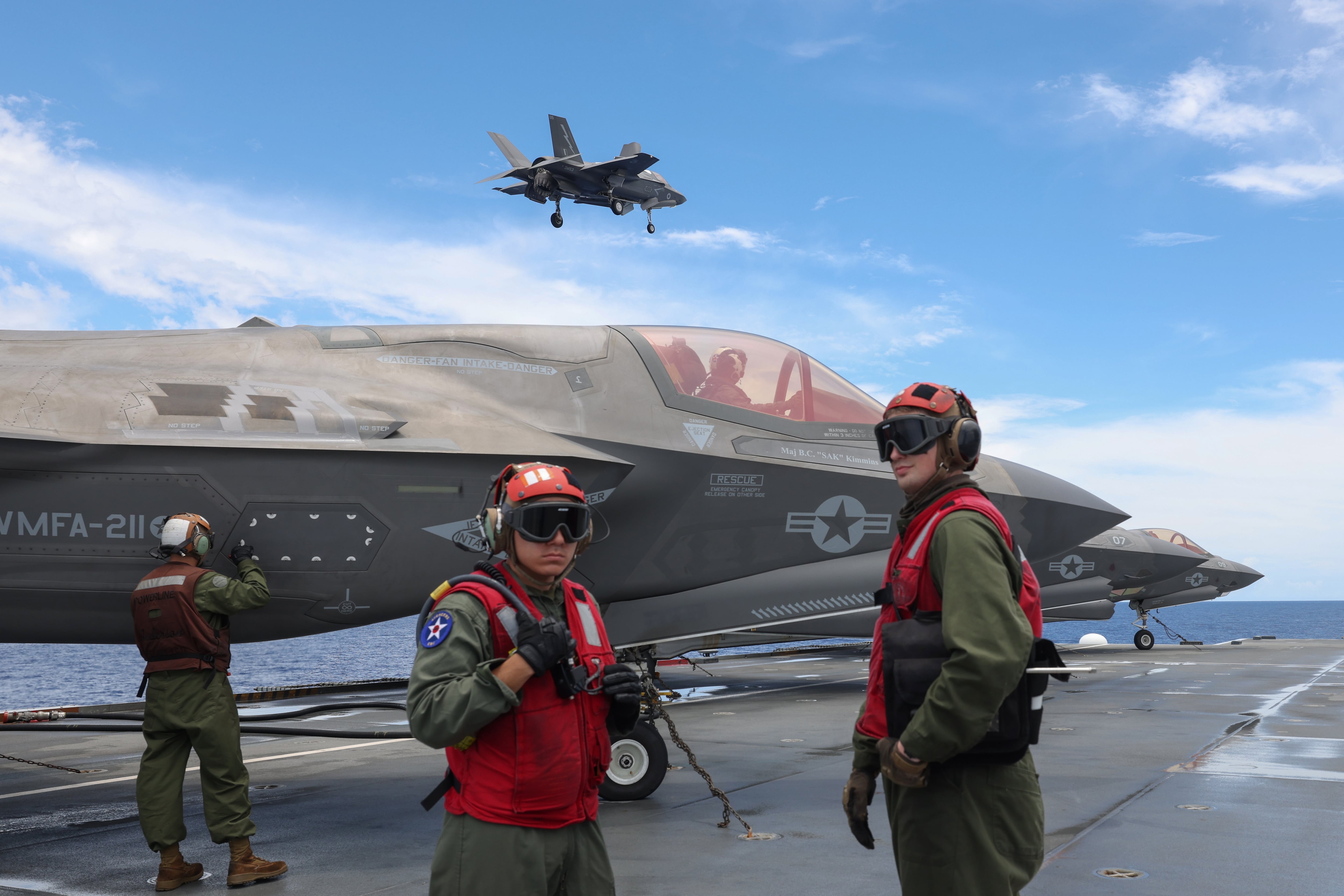NATIONAL HARBOR, Md.—The top U.S. Air Force officer in the Pacific said Tuesday he is keeping his options open on which military planes will become part of an increased American presence in Australia, after the island nation’s defense minister publicized the move in Washington last week.
“F-22s, F-35s, F-16s, F-15s, B-52, B-1s — what we have available to us, we will [send], as long as Australia is OK with that,” Pacific Air Forces boss Gen. Kenneth Wilsbach told reporters at the annual Air Force Association conference here.
The two countries aim to deepen their existing partnership through “rotational deployments of all types of U.S. military aircraft to Australia,” plus stronger military logistics and maintenance enterprises, Defense Minister Peter Dutton announced in a Sept. 16 joint press conference with Australian Foreign Minister Marise Payne, U.S. Defense Secretary Lloyd Austin and Secretary of State Antony Blinken.
RELATED

That cooperation comes amid an international row between France and the United States over Australia’s decision to pursue American-made nuclear-powered submarines rather than conventional versions built by the French. The agreement between the United States, United Kingdom and Australia does away with a prior $40 billion deal between Australia and France.
The U.S. Air Force regularly trains with the Royal Australian Air Force and occasionally sends planes to the continent for routine bomber deployments meant to deter regional adversaries like China. The two are part of the global F-35 Joint Strike Fighter program, as well as the Five Eyes intelligence-sharing alliance with the U.K., New Zealand and Canada.
Australia “recently had jets up at Eielson Air Force Base doing Red Flag-Alaska, they recently had their E-7 [Wedgetail] at Hickam Air Force Base [Hawaii] doing maneuvers with our F-22s there, and we had some F-16s that were there also at the same time. We do that throughout the year,” Wilsbach said.
The coronavirus pandemic has stalled that partnership over nearly two years and threatens to slow the start of new American missions in Australia. Wilsbach said the U.S. has limited its deployments to Australia while it is enforcing a two-week quarantine upon arriving in the country.
“We really don’t like having aircrew sit down for two weeks,” he said. “Once that lifts, we’ll look to add some additional deployments to continue to improve our interoperability.”
Despite diplomatic tensions with France, America’s oldest ally, Air Force Chief of Staff Gen. Charles “CQ” Brown said the situation hasn’t created ripple effects for military air officials.
He hasn’t personally spoken to Gen. Stéphane Mille or Air Marshal Mel Hupfeld, respectively the French and Australian air chiefs, since the submarine decision was made but has seen each in the past month.
The U.S. airpower relationship with France and Australia remains “rock solid,” Brown told reporters Tuesday.
“I’ve gone through various events before where, at the political level, things are being worked through,” he said. “But [in] the personal relationships between our air chiefs, and as we work to do the missions that we do, both countries are great partners.”
Rachel Cohen is the editor of Air Force Times. She joined the publication as its senior reporter in March 2021. Her work has appeared in the Washington Post, the Frederick News-Post (Md.), Air and Space Forces Magazine, Inside Defense, Inside Health Policy and elsewhere.




